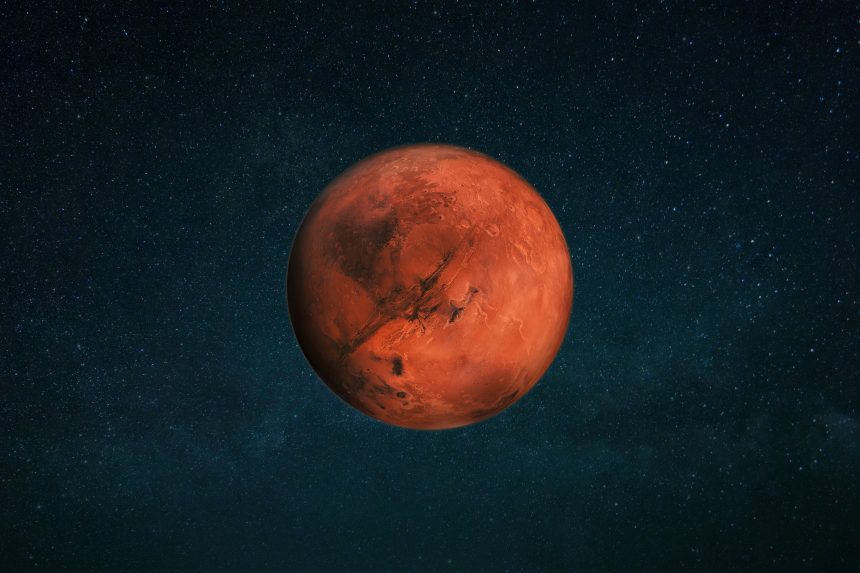In an extraordinary scientific breakthrough, a team of researchers has unveiled the existence of a colossal volcano on Mars, one that was ingeniously masquerading within the Martian landscape. This significant find challenges our preconceived notions about the geological activity on Mars and casts new light on the potential for ancient habitable conditions on the red planet, opening intriguing avenues for future Martian exploration.
The Groundbreaking Discovery: Unmasking a Volcanic Giant
Employing sophisticated imaging technology aboard orbiting satellites, scientists have stumbled upon what is believed to be one of the grandest volcanic structures on Mars, discreetly nestled under the planet’s characteristic dust and its wave-like dunes. This revelation of a hidden volcano, rivaling the enormity of the largest known volcanoes within our solar system, marks a pivotal moment in Martian exploration. The volcano’s elusive nature, hidden by subtle landforms and a veil of Martian dust, had kept it from our gaze until now.
The Discovery’s Profound Implications
This newfound Martian volcano is pivotal for a myriad of reasons. Primarily, it introduces a fresh narrative to the chronicles of Martian volcanic activity, positing that the planet may have been geologically vibrant far more recently than previously surmised. Such an insight profoundly impacts our comprehension of Mars’ climatic evolution, along with its erstwhile capacity to harbor water and possibly life.
Furthermore, the unveiling of such a vast volcanic edifice alludes to intricate subterranean processes that could have significantly influenced Mars’ capacity for life. Volcanoes, by their nature, can emit life-sustaining gases and warmth, potentially fostering ephemeral habitable zones. The mineral-rich deposits left in the wake of volcanic eruptions could also serve as vital resources for microbial life forms.
Navigating New Frontiers: Implications for Exploration
The exposure of this vast Martian volcano ushers in both challenges and opportunities for forthcoming exploratory endeavors. The volcano’s immense scale and geological intricacy pose substantial logistical challenges for rover missions. Yet, it also unveils a unique window to dissect Mars’ volcanic and climatic past in unprecedented detail.
Investigating this behemoth could yield pivotal insights into Mars’ geological rhythms, including eruption patterns and their influence on the Martian atmosphere and its potential for past life. Volcanic realms, now more than ever, stand out as prime candidates in the search for historical Martian life, having possibly cradled life-supporting conditions.
Looking Ahead: Martian Studies Transformed
The identification of this covert volcanic colossus signifies a watershed in the study of Mars, compelling a reevaluation of the planet’s geological and atmospheric narrative. It underscores the critical need for ongoing scrutiny and exploration of Mars, leveraging both orbiting reconnaissance and surface missions. With technological advancements, we anticipate uncovering further Martian secrets, each revelation bringing us closer to understanding the complex tapestry of processes that have sculpted the Martian surface and atmosphere.
In summation, the discovery of this hidden Martian volcano not only broadens our geological knowledge but also opens up new corridors for probing into Mars’ habitability and the ancient conditions that might have supported life. As our exploration of the neighboring planet deepens, every discovery nudges us closer to answering the perennial question of our solitude in the cosmos.








